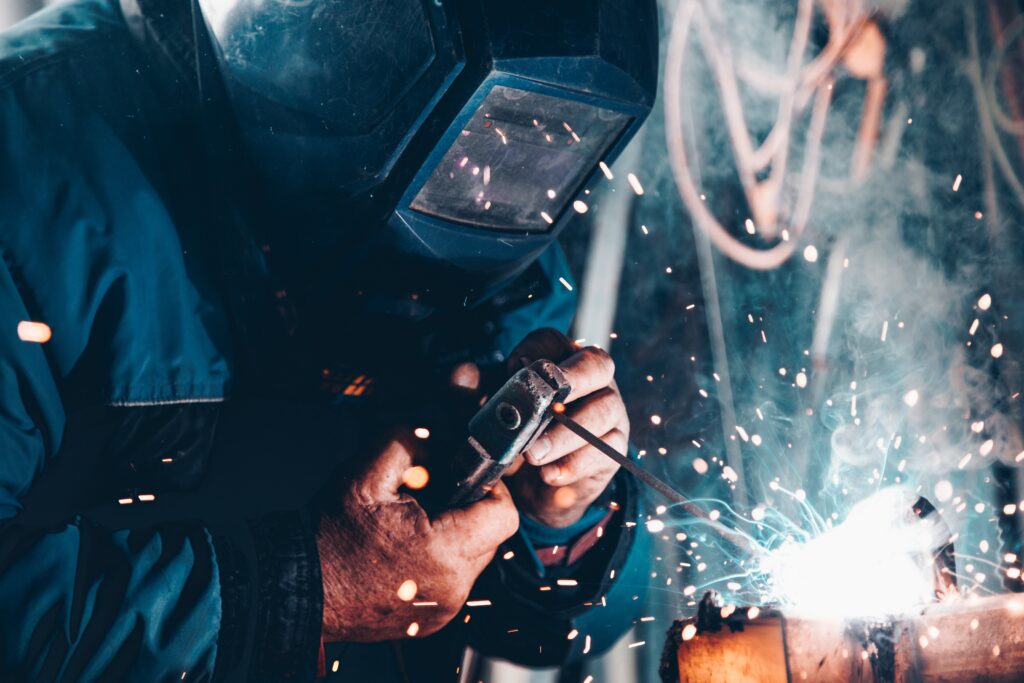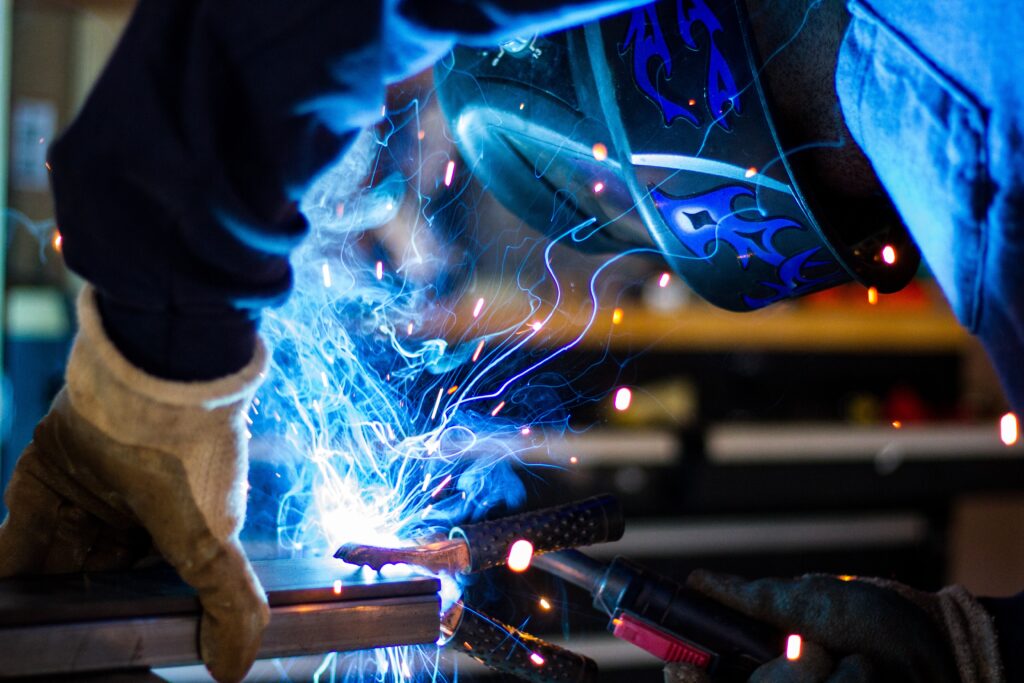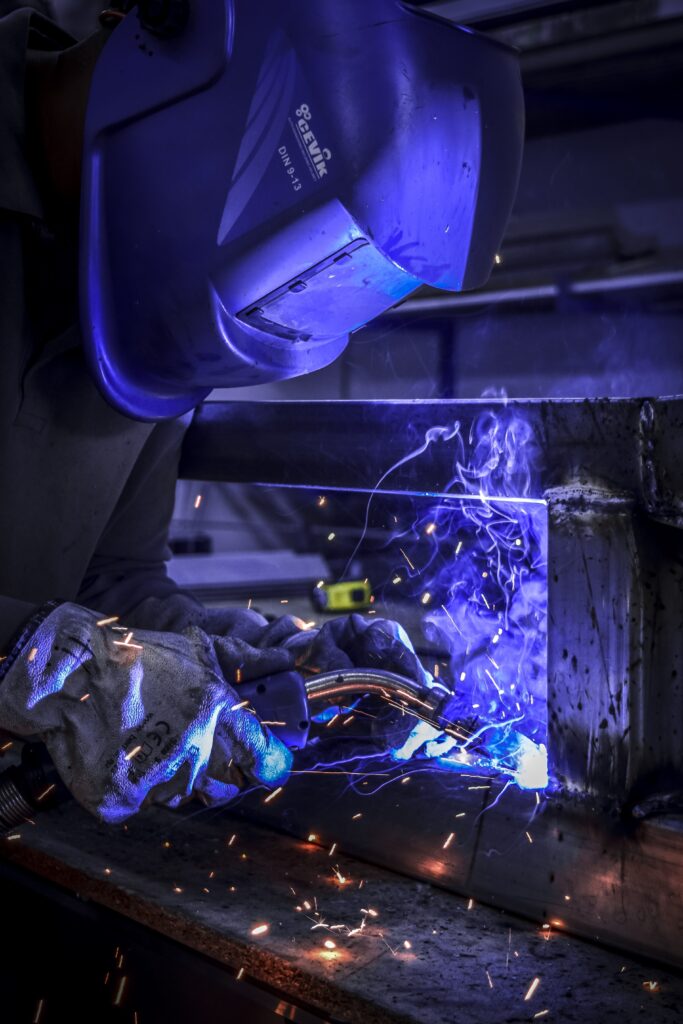Are you curious to discover more about the world of welding? This interesting article sheds light on insights like the average age of welders. It’s a fascinating look into this essential industry, from the hardcore veterans who have been at it for decades to the fresh-faced newcomers just sparking their torches for the first time. By the end of reading, you’ll have a better grasp of this intriguing field and one of its most interesting statistics.

Understanding the Welding Profession
Defining welding as a profession
Welding is a crucial skill in the industrial world, and as a profession, it carries great significance. It involves the use of intense heat to fuse together different types of metals. Welders bear the responsibility of maintaining the safety and integrity of objects and structures that span industries – from cars and ships to bridges and buildings, making the work they do of immense importance.
History and development of welding
The welding profession has a long and rich history. Dating all the way back to the Bronze Age, ancient civilizations used simple welding techniques. The process and technology of welding took a big leap forward during the 19th and 20th centuries, with the invention of electric arc welding and gas welding, among others. Today, welding technology continues to evolve with advancements in automation and robotics.
Various roles within the welding profession
Within the welding profession, there are various roles and specializations. Some welders work in factories or workshops, while others work in construction or repair workshops. Depending on their environment, welders learn to expertly manipulate different types of welding equipment and techniques. Additionally, some welders may opt to specialize in specific sectors, such as the automotive industry, the construction industry, or even underwater welding.
Exploring the Demographics of Welders
Global perspective on welders’ demographics
When you look at the global perspective, welders come from all walks of life and backgrounds, adding diversity and richness to the profession. While welding remains a dominant profession in countries with strong industrialization, you’ll find welders in virtually every corner of the globe, from bustling urban cities to remote rural areas.
Breakdown by gender
Traditionally, welding has been a profession dominated by men, a result of the craft’s physical demands and its deep roots in industries such as construction and manufacturing. However, more women are becoming involved in welding, with an increase in female representation documented in recent years. This shift has been made possible by advancements in welding technology and increased emphasis on skill and precision.
Breakdown by race and ethnicity
Like many industries, the welding profession exhibits a certain degree of racial and ethnic diversity. The representation of different races and ethnicities varies significantly from one region to another. Efforts are being made globally to ensure the profession is as inclusive as possible, to create equal opportunities for all, regardless of race or ethnicity.

The Average Age of Welders
Current average age
The average age of welders changes over time and can vary by region. However, according to several recent surveys and studies, the current average age of welders is often found to be somewhere in the mid to late 40s.
Comparison of average age over the last few decades
The average age of welders has generally been on the rise over the last few decades. This trend can be attributed to a number of factors, including longer life expectancies, delayed retirements, and fewer young people entering the profession.
Predictions for future average age
Looking into the future, it’s expected that the average age of welders may continue to rise due to factors like the aging workforce and decreasing interest in trade jobs among young people. However, this is a trend that the industry may work to reverse by attracting more young people to take up welding as a profession.
Age Range and Median Age of Welders
Lower and upper age limits in the profession
Welding is a profession that has no strict age limits. It’s not uncommon to see young people in their late teens starting their welding careers, just as it’s normal to find experienced welders still working in their 60s. However, the physical demands of the profession often lead to early retirement.
Median age of welders
The median age of welders, like the average age, hovers in the mid to late 40s range. This suggests that many welders are experienced professionals who have been practicing their craft for a significant amount of time.
Factors influencing the age range
Several factors contribute to the age range seen in the welding profession. These include things like the entry age into the profession, retirement age, lifespan, and succession planning in the industry. Other factors like access to education, training, and apprenticeship opportunities can also influence the age range in the profession.

Career Path and Age in Welding
Typical age to start a career in welding
The typical age to start a career in welding often coincides with the completion of secondary education, around 18-20 years. However, some enter the profession later in life after gaining experience in other fields.
How long does it take to become a professional welder
The time it takes to become a professional welder can vary greatly, with the minimum usually being around two years. This typically includes vocational training or an apprenticeship, followed by on-the-job experience.
Likely age of retiring from the profession
Given the physically demanding nature of the work, the likely age of retirement for most welders is around the early to mid-60s. However, in some cases, welders may choose to retire earlier or continue working beyond this age depending on individual circumstances.
Age and Experience Levels in Welding
Connection between age and experience level
Like any profession or craft, there is a direct connection between age and experience level in welding. As welders grow older, they naturally amass more experience, and this can greatly enhance their skill level and efficiency.
Advantages of being an experienced welder
Being an experienced welder comes with numerous advantages. This includes mastery of welding techniques, knowledge of safety practices, and the ability to handle complex and challenging welding tasks. Further, experienced welders often have opportunities for career advancement.
Younger vs. Older welders: A comparative look
Younger and older welders bring different strengths to the table. Younger welders may have an edge in physical stamina and adaptability to new technologies. Meanwhile, older welders often bring a wealth of experience and deep knowledge of traditional welding techniques.
Education, Training, and Age in Welding
Age upon entering welding training programs
The age at which individuals enter welding training programs can vary widely. Many embark on these programs right after high school, while others might transition into welding from different professions at later stages of their lives.
Duration of education and training
The duration of education and training for becoming a welder typically ranges from one to two years, depending on the specific program, and includes both classroom instruction and hands-on training.
Benefits of continuous learning and development in welding
Continuous education and development in welding are imperative, regardless of the age or experience level of the welder. For younger welders, continued learning helps build and refine their skills, while for experienced welders, it ensures they stay up-to-date with new welding technologies and practices.
Health, Safety, and Age in Welding
Health hazards and risks involved with welding
Welding carries certain health hazards and risks, such as exposure to harmful gases and fumes, intense light, and potential burns or injuries from sparks and molten metal. Therefore, following safe working practices is critically important.
Age-related health and safety considerations in welding
As welders age, certain health and safety considerations come into play. Older welders may be more susceptible to fatigue, weakened vision or respiratory issues. Therefore, additional precautions may be required to ensure their safety on the job.
Importance of health and safety trainings
Regardless of age, all welders should regularly participate in health and safety trainings. These trainings ensure welders understand and adhere to safety regulations and practices, reducing the risk of injury or illness.
Impact of Aging Workforce on the Welding Industry
Concerns about an aging welding workforce
A major concern within the welding industry is the aging workforce. As experienced welders retire, there’s a fear of a potential skills gap, especially if fewer young people are entering the profession.
Efforts to attract younger individuals into welding
In order to combat the effects of an aging workforce, efforts are being made to attract younger individuals into the welding profession. These include promoting vocational training, advocating for the financial stability of the profession, and showcasing the variety of roles and avenues within the welding industry.
Implications of an aging workforce on the future of welding
An aging workforce could have significant implications for the future of welding. It could lead to labor shortages, reduce the industry’s performance output, and increase the demand for skilled, experienced welders. On the other hand, it could also lead to an increased focus on developing more advanced welding technologies and techniques.
Conclusion: The Age of Welders and the Future of Welding
Revisiting the average age of welders
On revisiting the subject of age in welding, it’s clear that age plays a significant role in the profession. The current average age of welders points to a mature and experienced workforce. However, it also underscores the challenges posed by an aging workforce.
Impacts on the welding industry
The implications of an aging welding population are far-reaching for the welding industry. While it could lead to a shortage of skilled labor, it could also trigger an increased focus on innovation and technological advancements.
Anticipating the future of welding with regard to age demographics
Looking to the future, the welding profession must tackle the challenges posed by its aging demographic head-on. It’s crucial that investments are made in training and education opportunities for young people, and that the trade creates an environment that is inclusive and welcoming to all – regardless of age, gender, or ethnicity. The future of the welding industry will rely on the successful fusion of the skills and experience of older welders with the fresh perspectives and innovative potential of younger welding professionals.
